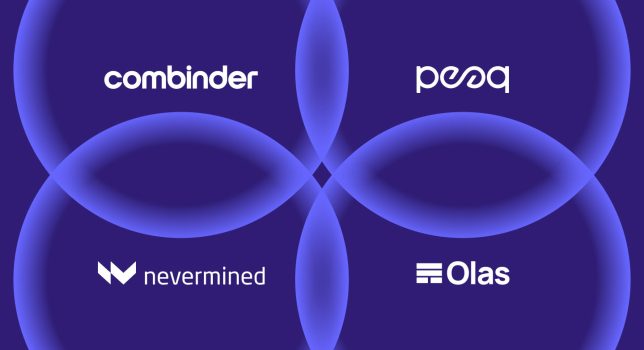Summary:
- Zilliqa launches EVM compatibility;
- EVM compatibility makes operating on Zilliqa so much easier for developers;
- The new upgrade will open Zilliqa up to a larger audience and boost its growth,
- ZIL token has failed to reflect the sentiment.
Introduction

Source: Zilliqa
Zilliqa could be the future of DApps! That sounds a bit too bold, but it could soon become very true.
As a blockchain enthusiast, you should be no stranger to Zilliqa (ZIL), the high-performance, low-fee network that aims to democratize access to decentralized applications (dApps) and digital assets. That being said, Zilliqa is about to take a turn for the better and become even more attractive to developers and investors alike.
Why? Well, as of April 25, 2023, Zilliqa has implemented Ethereum Virtual Machine (EVM) compatibility on its mainnet. What this means is that developers can now use all their favorite Ethereum dApps and wallets on Zilliqa without any hassles or conversion requirements.
Developers will also be able to deploy the much-loved Solidity smart contracts on the network with utmost ease, leveraging Zilliqa’s scalability and security. This upgrade aligns with the Zilliqa team’s plans to move the network to Zilliqa 2.0. This transition will see the network retain all the current features of the Zilliqa network while scaling network performance and utility.
What Is EVM Compatibility for Zilliqa, and How Does It Work?
EVM compatibility is a feature that allows Zilliqa to run smart contracts written in Solidity, the most popular programming language for Ethereum dApps. Solidity is widely used by developers to create various types of dApps, such as decentralized exchanges (DEXs), lending protocols, gaming platforms, and NFT marketplaces. By supporting Solidity, Zilliqa opens its doors to a robust and vibrant community of developers that can easily migrate their existing dApps or build new ones on Zilliqa.
EVM compatibility also allows Zilliqa to support the native transfer of tokens between EVM and Scilla interfaces without the need for any conversion or bridging. Simply put, developers can use their ZIL tokens directly with any EVM dApp or wallet, such as MetaMask.
This essentially means goodbye to the days of wrapping tokens or the use of bridge contracts to move ZIL tokens across networks. Users can simply send and receive ZIL tokens as they would with any other ERC-20 token on Ethereum.
Finally, EVM compatibility is fully integrated with Zilliqa’s existing features, such as sharding, pBFT consensus, and Scilla smart contracts. This means that you can enjoy the best of both worlds: the speed, security, and flexibility of Zilliqa coupled with the compatibility, interoperability, and convenience of Ethereum.
What is Zilliqa?
Zilliqa is a blockchain platform designed to enable high-throughput and scalable transactions using sharding technology. It was launched in 2019 and has gained popularity in the blockchain community due to its innovative approach to solving scalability issues that other blockchain platforms face. Zilliqa aims to provide a faster and more efficient platform for decentralized applications (DApps) and tokens, making it a promising contender in the blockchain space.

Why Is this Upgrade Important?
By supporting EVM compatibility, Zilliqa aims to position itself as a leading platform for decentralized applications and digital assets, especially in the DeFi, NFT, and gaming niches. Some ways EVM compatibility will impact the Zilliqa network include:
- Increasing Value Proposition and Competitiveness: Through EVM compatibility, Zilliqa will become a honeytrap for developers looking for a fast, secure, and low-cost alternative to Ethereum. Zilliqa will also have the leeway to leverage Ethereum’s existing ecosystem and infrastructure, such as tools, libraries, and token standards. This will give Zilliqa an edge over other blockchains that do not support EVM compatibility or have a limited implementation of it.
- Enhancing Innovation and Diversity: Because the EVM compatibility will allow it to support both Scilla and Solidity standards, Zilliqa will be able to foster a rich and diverse environment for dApps and tokens. Developers will have a larger basket of choices and flexibility to create different types of dApps and tokens using the best features of both programming languages. Users will also have more options and variety to access different types of dApps and tokens using their preferred wallets and interfaces. This will create more opportunities for collaboration and value creation across different platforms and markets.
- Boosting Adoption and Growth: Finally, by supporting EVM compatibility, Zilliqa will have a direct straw into the large and growing user base of Ethereum dApps and wallets. Zilliqa will also enjoy increased exposure and accessibility to new audiences and markets, especially in regions where Ethereum is popular or dominant. This will help Zilliqa expand its reach and influence in the blockchain space, as well as increase its network effect and liquidity.As you can imagine, all these could have a notably favorable influence on the price of Zilliqa’s native token.
What Is ZIL Doing?
At the time of writing, ZIL is not acting like the news of EVM compatibility matters. In fact, the price is on a bearish trajectory and has been that way for the past few days. On April 25, the same day of the EVM compatibility announcement, ZIL was down by over 5% and is down by a disappointing 18% since it recorded a two-month high on April 23.

ZIL/USD Daily Chart on TradingView
To make matters worse, ZIL is living through a notable decline in social dominance, suggesting that the token is not a trending topic in the industry and is not being discussed on social media platforms.

Source: Santiment
Interestingly, there was a notable decline in the social dominance of ZIL, implying that the token is not a “topic of interest” or is not being actively discussed on social media platforms. Now, if its social dominance maintains its downward trend, the EVM compatibility upgrade could practically fly under the radar while ZIL continues to drop.
ZIL currently trades at $0.2940 and has a 24-hour trading volume of $105 million.
Decentralized Applications (DApps)
Decentralized applications DApps are expected to play a significant role in the future of technology and the internet. As blockchain technology continues to mature, DApps are becoming more user-friendly and accessible to mainstream audiences. Here are some potential developments we may see in the future of DApps:
- Improved User Experience: DApps will need to be designed with a focus on user experience, ensuring that they are user-friendly and easy to navigate.
- Interoperability: DApps will need to become more interoperable, enabling them to communicate with each other seamlessly. This will enable users to access multiple DApps from a single interface.
- Scalability: As the number of users and transactions on blockchain networks increases, scalability will be a crucial factor. Solutions like sharding, layer-2 solutions, and sidechains are being developed to address this issue.
- Increased Adoption: As DApps become more user-friendly and accessible, we can expect to see increased adoption from mainstream audiences, leading to further innovation and growth in the space.
- Integration with Traditional Systems: DApps are likely to become more integrated with traditional systems, potentially creating new business models and disrupting traditional industries.
An example script for a decentralized application (DApp) on the Ethereum blockchain:
pragma solidity ^0.8.0;
contract MyDApp {
mapping (address => uint256) public balances;
event Deposit(address indexed depositor, uint256 value);
function deposit() public payable {
balances[msg.sender] += msg.value;
emit Deposit(msg.sender, msg.value);
}
function withdraw(uint256 amount) public {
require(balances[msg.sender] >= amount, "Insufficient balance.");
balances[msg.sender] -= amount;
payable(msg.sender).transfer(amount);
}
}
This script defines a simple DApp that allows users to deposit and withdraw Ether. When a user deposits Ether, the deposit function is called, which updates the user's balance and emits a Deposit event. When a user withdraws Ether, the withdraw function is called, which checks that the user has sufficient balance and transfers the requested amount to the user's address.
This is just a simple example, and DApps can be much more complex, with features like smart contracts, token issuance, and decentralized governance.Closing Thoughts
Zilliqa is on track for big things, and the EVM compatibility upgrade is just a checkpoint on the road to this aim. This could well become the future of Dapps based on the improvement and upgrades it has done. The upgrade will make Zilliqa a more attractive platform for developers and users who want to enjoy the benefits of a high-throughput, low-fee, scalable blockchain. By implementing EVM compatibility, Zilliqa has opened the door for more interoperability, innovation, and adoption in its ecosystem.
Zilliqa is proving that it is a serious contender in the blockchain space and one that is worth keeping an eye on. However, it would be good to see the ZIL token react in line with this exciting new development for the crypto project.









